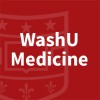
Full-Leg vs Below-Knee Elastic Stockings for Prevention of the Post-Thrombotic Syndrome
Deep Vein ThrombosisProspective controlled randomized clinical trial. Consecutive patients with acute proximal deep vein thrombosis of the lower extremities, with or without contemporary manifestations of pulmonary embolism, are randomized to receive either a below-knee or a full-leg graduated compression (30-40 mm Hg at the ankle) elastic stocking for prevention of the post-thrombotic syndrome (PTS). All patients are followed up to three years to assess the development of the PTS, defined according to a validated clinical score (the Villalta scale). The rate of PTS is compared between the two study groups. In addition, there is an assessment of patients' compliance and tolerability of the two different devices.

Study of Apixaban for the Prevention of Thrombosis-related Events Following Knee Replacement Surgery...
Deep Vein ThrombosisPulmonary EmbolismThe purpose of this study is to learn if apixaban can prevent blood clots in the leg (deep vein Thrombosis [DVT]) and lung (pulmonary embolism [PE]) that sometimes occur after knee replacement surgery and to learn how apixaban compares to enoxaparin (Lovenox®) for preventing these clots. The safety of apixaban will also be studied.

Study Comparing Desirudin With Heparin to Prevent Vein Clots After Heart and Lung Surgery
Deep Venous ThrombosisA blood clot in the veins, also known as deep venous thrombosis (DVT), is one of the most common complications after surgery. This may result in death if a clot breaks off and travel to the lungs; this is referred to as pulmonary embolism (PE). After heart surgery the incidence of DVT ranges from 20-48% and following lung surgery the incidence is 19-26%. In order to decrease the likelihood of this complication, patients receive by injection a blood thinning medicine. Heparin is the usual medicine used for this purpose following heart and lung surgery. Recently there have been reports that other medicines may be more effective than heparin for this purpose. Also there have been reports that some patients develop antibodies to heparin. When this occurs, this may prevent the heparin from being effective and may even promote the formation of blood clots. Antibodies to heparin may be present more often following heart and lung surgery than other types of surgery. There is a new medicine called desirudin (Iprivask), which may be used instead of heparin to prevent blood clots following heart and lung surgery. Desirudin is currently approved by the FDA to prevent blood clots following hip surgery. The purpose of this study is to compare desirudin with heparin for the prevention of vein clots after heart and lung surgery.

A Phase 2 Pilot Study of Apixaban for the Prevention of Thromboembolic Events in Patients With Advanced...
ThrombosisCancer1 moreThe purpose of this study is to learn whether apixaban is well-tolerated and acceptable as anticoagulant therapy, when administered to patients with advanced or metastatic cancer and at increased risk for venous thromboembolic events. Demonstration of a favorable benefit:risk profile could lead to significant reduction in this serious and sometimes fatal complication of ongoing cancer and its treatment.

Study of Apixaban for the Prevention of Thrombosis-related Events in Patients With Acute Medical...
Venous ThrombosisPulmonary EmbolismThe purpose of this study is to learn if apixaban can prevent blood clots in the leg (deep vein thrombosis [DVT]) and lung (pulmonary embolism [PE]) that sometimes occur within patients hospitalized for acute medical illness, and to learn how apixaban compares to enoxaparin (Lovenox®) for preventing these clots. The safety of apixaban will also be studied.

The Use of Low Molecular Weight Heparin in Traumatic Brain Injury
Brain InjuryVenous ThrombosisTo study the safety and efficacy of early administration of Low Molecular Weight Heparin to patients with traumatic brain injury.

Boston Area Anticoagulation Trial for Atrial Fibrillation (BAATAF)
ArrhythmiaAtrial Fibrillation6 moreTo determine the benefits and risks of oral anticoagulant therapy in reducing embolic stroke and systemic emboli in patients with atrial fibrillation without rheumatic heart disease.

Anticoagulant Versus Dual Antiplatelet Therapy for Preventing Leaflet Thrombosis and Cerebral Embolization...
Aortic Valve StenosisThis trial is to compare the efficacy of NOAC(Novel Oral Anticoagulants) with edoxaban vs. dual antiplatelet therapy (DAPT) for prevention of leaflet thrombosis (documented by cardiac CT imaging) and cerebral embolization (documented with brainDiffusion-weighted (DW) magnetic resonance (MR) imaging) in patients without an absolute indication for chronic oral anticoagulation (OAC) after successful transcatheter aortic valve replacement(TAVR).

Point-of-care Ultrasound in Finland
Deep Vein ThrombosisAbdominal Aortic Aneurism8 moreThis study has two aims. Deep venous thrombosis (DVT) is a common suspected medical condition. If it cannot be excluded clinically and using D-dimer, ultrasound examination is required. An option for traditional radiologist-performed ultrasound is a 2-point compression ultrasound (2-CUS). The safety of this technique is proven. However there does not exist any data on costs comparing traditional and 2-CUS pathways in primary health care. This study will evaluate the total cost of both pathways by conducting a cost-minimization analysis. It will also study the effect of a simple ultrasound education on the referrals to hospital due to suspected DVT. Hypothesis 1: Short education in ultrasound will reduce significantly referrals to hospital and save resources. Length of stay (LOS) in emergency department (ED) is related to increased mortality, morbidity, prolonged hospital stay and probably patient satisfaction. LOS of patients with a point-of-care ultrasound (POCUS) performed by an emergency physician (EP) will be compared to those that have a radiology performed ultrasound examination. Further examination and accuracy of POCUS will be noted. Hypothesis 2: POCUS can shorten LOS significantly in selected clinical conditions

AntiCoagulation Tracking InterVention and Evaluation
AnticoagulationAtrial Fibrillation5 moreAnticoagulants are a leading cause of acute injury from adverse drug events, leading to ~20,000 serious injuries reported to the Food and Drug Administration per year and more than 220,000 emergency department visits annually. Therefore, we propose to implement a health information technology (HIT) population management tool at two distinct anticoagulation clinics that will allow the care team to assign and track tasks essential for timely patient monitoring. We will examine its effect on anticoagulation management outcomes through a randomized trial, hypothesizing that such interventions can be effective as well as cost-effective strategies to improve patient safety in the context of anticoagulation management services.
